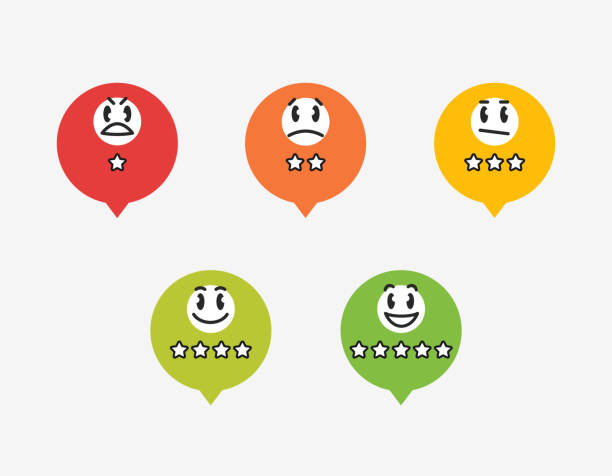


May 29, 2024
Eyes4Research
The retail industry is in the midst of a significant and transformative change driven by technological advancements. Among these innovations, Augmented Reality (AR) and Virtual Reality (VR) are at the forefront, offering immersive experiences that revolutionize how consumers interact with brands and products.
Let’s explore the current trends in AR and VR within retail and how research helps brands gain deeper insights and drive these technologies even further.
The Emergence of AR and VR in Retail
AR overlays digital information onto the physical world, enhancing the real-world environment with interactive elements. VR, on the other hand, creates a completely immersive digital environment that users can explore. Retailers are leveraging both technologies to create engaging and interactive shopping experiences.
Key Trends in AR and VR for Retail
The Role of Custom Online Panels in AR and VR Retail Research
As AR and VR technologies continue to evolve, understanding consumer preferences and behaviors is crucial for retailers looking to leverage these innovations effectively. Custom online panels, such as the ones developed and managed by Eyes4Research, provide a valuable tool for gaining these insights. Online panels provide retailers with targeted feedback, in-depth insights, continuous engagement with consumers, and data-driven decisions that can inform product development.
AR and VR are transforming the retail landscape by offering innovative ways for consumers to interact with products and brands. As these technologies become more prevalent, retailers must invest in understanding how to implement them best to meet customer expectations. Custom online panels provide an invaluable resource for gaining the insights needed to drive successful AR and VR initiatives.
When retailers invest in custom online panels, they can not only optimize their current AR and VR strategies but can also ensure they are well-positioned to adapt to future technological advancements as they come along. The result is a more engaging, personalized, and ultimately more successful retail experience that meets the evolving demands of today’s consumers.
Read more about the retail industry and technology on the Eyes4Research blog. Eyes4Research also has everything you need to collect high-quality insights from consumers. Our custom online panels are comprised of B2B, B2C, and specialty audiences ready to participate in your next research project. Learn more about our specialty panels here.

February 27, 2024
Eyes4Research
The cannabis industry has experienced a whirlwind of changes in recent years. From legalization movements sweeping across various parts of the U.S. to the emergence of new products and consumption methods, the landscape of the cannabis market has been dynamic. However, amid all the hype and excitement, there’s a lingering question: Is the cannabis industry experiencing a decline, or has it simply reached a plateau?
Understanding the Current Cannabis Landscape
The initial boom of the cannabis industry was fueled by optimism and high expectations. As legalization efforts gained traction in different parts of the world, investors poured funds into cannabis-related ventures, and consumers eagerly explored a plethora of products ranging from recreational to medicinal. This surge in interest led to exponential growth and a seemingly boundless potential for the industry.
Are There Signs of Saturation in the Cannabis Industry?
However, as the industry matured, certain challenges became apparent. Regulatory hurdles, oversupply issues, and fierce competition have presented significant obstacles for businesses operating in the cannabis space.
Market saturation, especially in regions where legalization occurred early on, has led to price wars and squeezed profit margins for many companies. Moreover, shifting consumer preferences and the emergence of alternative products have added further complexity to the market dynamics.
Plateau or Decline?
The question of whether the cannabis industry is on a downward trajectory or has simply reached a plateau is a nuanced one. While some market segments may be experiencing a slowdown, others continue to show promise and resilience.
For instance, the medicinal cannabis sector continues to expand as more research validates its therapeutic potential and as regulatory frameworks become more accommodating.
What is the Role of Market Research in Understanding the Cannabis Industry?
In navigating these uncertain waters, reliable data and insights are more crucial than ever. This is where custom online panels, such as the ones created and managed by Eyes4Research, can make a difference.
By leveraging the power of digital platforms, custom online panels allow businesses to collect real-time feedback from targeted demographics and key stakeholders within the cannabis industry.
Whether it’s understanding consumer preferences, tracking market trends, or evaluating the efficacy of marketing strategies, custom online panels offer a cost-effective and efficient solution for staying ahead of the curve.
Why Choose Online Panels?
Custom online panels enable businesses to tailor their research initiatives to accommodate specific objectives and demographics, ensuring that the insights gained are actionable and relevant.
With customizable survey designs and access to diverse participant pools, businesses can gain deeper insights into consumer behaviors, preferences, and attitudes toward cannabis products. In addition, the scalability of online panels allows for seamless expansion into new markets and the ability to track evolving trends over time.
The future of the cannabis industry remains uncertain, but one thing is clear: staying informed and adaptive is the key to success in this rapidly evolving market. By leveraging online panels, businesses can gain the insights needed to navigate challenges, identify opportunities, and stay ahead of the competition.
Whether the industry is experiencing a decline or a plateau, those who invest in understanding their target audience and market dynamics will be well-positioned to thrive in the ever-changing world of cannabis.
Read more about cannabis consumers and cannabis products on the Eyes4Research blog. Eyes4Research also has everything you need to collect high-quality insights from cannabis users. Our panels are comprised of B2B, B2C, and specialty audiences ready to participate in your next research project. Learn more about our cannabis user panel and our other specialty panels here.

February 7, 2024
Eyes4Research
Advertising is dynamic– crafting compelling B2C and B2B brand messages and captivating creative materials is essential for brands to cut through the noise and resonate with target audiences. Let’s dive into the valuable role of online panels in refining advertising messages and shaping your creative development.
Understanding Message Testing and Creative Development
Message testing evaluates the effectiveness of advertising messages to ensure they resonate with the intended audience. Meanwhile, creative development involves refining visuals, sounds, and narratives to create engaging and memorable ads.
Leveraging Online Panels for Message Testing
Custom online panels, such as the ones created and managed for our clients by Eyes4Research, offer a diverse pool of participants, allowing brands to select specific demographics, interests, and behaviors for targeted feedback. Through well-designed surveys, brands can gain valuable insights from panelists about their perceptions of advertising messages and creative elements.
Collecting Feedback and Insights
Panelists provide feedback on message clarity, relevance, and memorability, helping brands better understand which messages resonate most effectively. Additionally, evaluating creative elements such as imagery, music, and branding aids in refining the visual and auditory components of ads.
Iterative testing and Optimization
Using iterative testing allows B2C and B2B brands to refine advertising messages and creative elements based on panel feedback. By analyzing data and making adjustments, brands can optimize their campaigns for maximum impact and resonance with the target audience.
Applying Insights to Advertising Campaigns
Insights gleaned from message testing and creative development inform strategic decisions in advertising campaigns. From media planning to content creation, understanding audience preferences and perceptions enhances the effectiveness of marketing efforts.
Eyes4Research creates and manages custom online panels that offer our clients the opportunity to tailor their research to specific audience segments ensuring targeted actionable insights. By partnering Eyes4Research, B2C and B2B brands gain access to a robust panel of engaged participants, facilitating efficient and effective message testing and creative development.
Harnessing the power of online panels for message testing and creative development is key to crafting impactful advertising campaigns. By leveraging insights from panelists, B2C and B2B brands can refine their messaging, captivate audiences, and drive success in the competitive landscape of advertising. Partner with Eyes4Research to unlock the full potential of custom online panels for your team’s marketing strategies.
Online panels are powerful tools that provide a more affordable way for companies to gather valuable data to determine the value of their brand’s product or service. Eyes4Research has everything your company needs to collect high-quality insights from consumers. Our panels are comprised of B2B, B2C, and specialty audiences ready to participate in your next research project. Learn more about our online panels here.

September 12, 2023
Eyes4Research
When the World Wide Web became publicly available in 1991, it revolutionized the way we work and play and perhaps more importantly how we consume information and goods. The early internet was relatively primitive and boring, but it soon evolved to be dominated by ecommerce and then social media platforms. Many tech and business experts believe that we are at the precipice of a new internet era, often referred to as “Web3,” for the third iteration of the internet. Proponents say that Web3 will be a decentralized internet that runs on blockchain technology, and brands that know how to utilize it to connect with their consumers will gain an advantage in the new tech-driven economy.
Gavin Wood, the founder of proof-of-stake cryptocurrency Polkadot and cofounder of Ethereum, first coined the term Web3 in 2014 to describe the increasingly decentralized internet based on blockchain technology, which he helped to create. Obviously, the definition is a bit broad and open to interpretation to a certain extent, so in the subsequent years others have added to Wood’s definition. As technology has advanced since 2014, and more people have become familiar with blockchain technology, other important elements of Web3 that’ve been identified are its trustless nature – which may sound negative, but in this context it’s not and will be explained more later – and users/consumers control over their personal information.
The trends suggest that although there are many barriers to the complete adoption of Web3, where it is adopted, investors, brands, and consumers will reap incredible benefits. Consumers will enjoy the control they will gain over their personal data, while brands will find new ways to connect with their loyal consumers. So let’s take a look at how Web3 started, where it is today, and how consumers can expect from this new iteration of the internet.
How the Internet Became Web3
Tech experts generally divide the history of the internet into three phases. The first phase, known as Web 1.0, includes the period from just before the World Wide Web went public in 1991 to 2004. This era of the internet was marked by static web pages that were primarily informational and not interactive, although some of the earliest ecommerce sites, such as Amazon, began during this era. The second era, Web 2.0, began in the mid-2000s with the growth of social media, blogs, and ecommerce. The internet became much more interactive and the technology was driven by smartphones and cloud computing. As blockchain technology became more widespread by the late 2010s, experts have argued that we entered the latest version of the internet around that time.
As we enter this new internet paradigm, its success will depend on its widespread adoption, which will largely be contingent upon how well consumers understand the technology. Web3 will be based on blockchain technology, which may sound complex at first but it’s really straightforward. Blockchains are online storage systems that use encryption and distributed computing to protect the data stored on them. Encryption gives only limited people access to the data, while the distributed or decentralized element means that shards of data need to match in order for data packets to be retrieved or transactions to take place. In theory, and so far in practice, this form of internet creates a “trustless” format, whereby users are not forced to trust a company or central authority to protect their data or ensure that transactions are legitimate. Blockchain technology has opened an array of opportunities for investors and consumers, some of which are currently being realized.
Real World Web3 Applications
Cryptocurrencies have led the transition to Web3, with Bitcoin, the world’s first cryptocurrency being released on January 9, 2009. Bitcoin’s potential application for Web3 investors and consumers were quickly realized, as it remains the number one cryptocurrency by market cap because of its utility as money, a store of value, and as a financial instrument. But as much as Bitcoin may’ve opened the Web3 door, it’s the number two cryptocurrency by market cap, Ethereum, which will likely play a bigger role in the new internet paradigm.
The Ethereum blockchain has proven to be highly adaptable and a destination for businesses and consumers who use Web3. Everyday new “tokens” are being created that allow users to access the Ethereum blockchain for decentralized finance, smart contracts, and non-fungible tokens (NFTs). NFTs are digital art that are “minted” as originals and stored on the blockchain. As strange as the concept of NFTs may seem to many, they’re gaining in popularity and market cap. Investment bank Jefferies that NFTs will have a market value of over $85 billion by 2025.
Smart contracts, decentralized finance (DeFi), and decentralized autonomous organizations (DAOs) will also play a role in the emerging world of Web3. Smart contracts are contracts that are stored on a blockchain and can only be completed or fulfilled when certain requirements are met, while DAOs are companies that are bound by rules coded into the blockchains they use. These two concepts are combined when DAOs store data, such as retail prices, and contracts with wholesalers on blockchains, with the advantage being they are invulnerable to standard hackers.
When DAOs and traditional companies use blockchains for business purposes, it is referred to as decentralized finance (DeFi). DeFi can include person-to-person or company-to-company transaction, with the primary benefit being that banks are bypassed. Although transaction fees are part of every blockchain transaction, they are often small and consumers only pay for the transactions they make. As more consumers are learning the ropes of Web3 and blockchain technology, companies and brands are starting to pay attention.
Some Brands That Have Adopted Web3 and DeFi
Due to the nature of Web3, it isn’t immediately apparent how many brands have adopted the new internet paradigm, but a quick look reveals that it is catching steam. Microsoft, AT&T, and Overstock.com have all begun accepting crypto for bill and merchandise payments, perhaps acting as the vanguard of DeFi and Web3 adoption among major brands. But a number of lesser known companies are also making inroads in the world of Web3.
Among the brands using Web3 and DeFi to watch out for the in coming years are the blockchain based social platform, Steemit, and the blockchain based supply chain, Everledger. Another company to follow is the decentralized exchange trading market, Augur. The reason why these three companies are potentially poised for success is because they all combine the new technology of Web3 with goods and services current consumers want.
Future Trends and Consumer Benefits of Using Web3
There’s no doubt that Web3 adoption will set the tone for technology advances in the coming decades, but brands that know how to utilize it, such as those mentioned earlier, will use it to connect with their consumers. The trustless element of blockchain technology gives plenty of freedom to the consumer in many different ways. For example, consumers will be able to trade online apps on blockchains using smart contracts, cutting out the middleman in the process. Web3 also has the ability to give consumers more control over their data.
Under the current internet paradigm, personal data is stored on servers that are vulnerable to hackers, but on Web3, data can be stored on blockchains that can only be released if the owner allows it. In addition to enhanced security, blockchain data storage will cut down on spam and those who use it will be able to say goodbye to third party cookies forever!
One of the most important future trends of Web3 will be how it connects brands with its consumers, by building more trust and loyalty. Because 76% of consumers don’t know what companies are doing with their personal data, the adoption of Web3 gives brands an opening. Perhaps somewhat ironically, the trustless aspect of the blockchain can provide a way for brands to rebuild trust with their customers, although it will require consumers to adopt the new technology. Brands can also leverage the new technology in other unique ways to build customer loyalty.
Nike has recently combined blockchain technology and the metaverse – which is considered another part of Web3 – to sell virtual sneakers in the virtual world, Roblox. Fashion brand Dolce & Gabbana recently combined the metaverse and NFTs to connect with its consumers by auctioning a nine-piece collection of NFTs for $6 million, which included a suit that the auction winner can wear in the metaverse. Brands can also issue NFTs and/or blockchain tokens as a way for their consumers to access special online events or deals, ultimately replacing standard loyalty points.
How well brands migrate loyalty rewards programs to Web3 will likely play a much bigger role in the retail space in the future, giving consumers more power over how they store and use those points. An average consumer is enrolled in 18 loyalty programs, but they are only actively engaged in less than half of them, meaning lost points for the consumer and fewer chances for brands to engage their customers. Web3 technology can bring customer loyalty programs to the next level by offering digital rewards that are uniquely ownable, tradeable, and collectable, transforming brand-customer transactions into a more immersive experience.
Of course the adoption of Web3 faces some barriers. Most of the big tech companies have no incentive to give up the power they hold over Web 2.0 and the current US government is hostile- to crypto generally and appears to know little, or care, about blockchain technology’s wider uses. Consumers are also slow to learn about what many perceive as an arcane form of technology, but many of these barriers existed before other major technology revolutions throughout history. Web3 may not replace the current iteration of the internet overnight, but brands that recognize its value as a tool to connect with consumers will find that it will be useful in the coming years.
About the author:
An industry leader and influencer – Rudly Raphael specializes in all aspects of research logistical design involving quantitative methodology, implementing internal system infrastructure to streamline business processes, channelling communication and developing innovative research solutions to ensure Eyes4Research remains a competitive force in the marketplace. An entrepreneur, inventor (patent holder), blogger and writer – his articles have been published in various magazines such as Medium, Ebony Magazine, Bussiness2Community and also cited in various journals and academic publications.

September 11, 2023
Eyes4Research
Uncertainty has become a constant in our lives. From economic fluctuations to global health emergencies, consumers are continually faced with unpredictable circumstances that influence their choices. As a result, understanding how uncertainty impacts consumer decision-making is crucial for B2C businesses that are striving to stay one step ahead of the competition.

The Impact of Uncertainty
We all know that uncertainty breeds caution. When consumers perceive an uncertain future, they tend to become more conservative with their spending habits. They are likely to postpone major purchases, opt for lower-cost alternatives, or save rather than invest. It’s this cautious approach that can significantly affect B2C industries ranging from travel and hospitality to luxury goods.
The Role of Market Research
Here is where an experienced market research agency can make all the difference. In times of uncertainty, having access to accurate and up-to-date consumer insights is invaluable. A professional research agency can provide B2C businesses with the following:
At Eyes4Research, we provide our B2C clients with the tools they need to navigate uncertainty. We specialize in creating and managing custom online panels for both B2B and B2C audiences that provide valuable insights that can empower companies with data-driven decision-making.
Uncertainty is an inescapable force in the current consumer landscape. But with the right market research partner, B2C businesses can turn that uncertainty into opportunities for growth and success.
Read more about market research and consumer behavior on the Eyes4Research blog. Eyes4Research also has everything B2C companies need to collect high-quality insights from consumers. Our panels are comprised of B2B, B2C, and specialty audiences ready to participate in your next research project. Learn more about our specialty panels here.

September 8, 2023
Eyes4Research
Any B2C business owner can tell you that launching a new product can be exciting and daunting. The stakes are high and every B2C business owner dreams of a successful product launch that captures the market’s attention and drives revenue.
But how can B2C businesses increase their chances of success when they are launching a new product? The answer lies in the essential role of research. Here is why market research is so crucial to the success of the launch of a new product.

Understanding the Market
Market research is the guiding force for any new product launch. By diving deep into audience preferences, needs, and behaviors, B2C businesses can identify gaps in the market that their product can fill. This knowledge ensures that the product being developed is aligned with what the potential audience has stated that they are seeking.
Custom online panels are an effective way to do that deep dive into what potential audiences want and need. Panels help B2C businesses obtain valuable feedback from their target audience and help them determine the proper market position for their new product.
Refining Your New Product
A well-researched launch starts with a well-developed product. Using custom online panels helps B2C businesses refine their product idea, its features, and its functionality to match the needs of the target audience. By gaining insights from the target audience, B2C businesses can tailor the new product to stand out from the competition, making it more compelling to potential buyers.
Helping our clients develop their own custom panels provided them with valuable data that gave them the opportunity to refine their new products, based on insights gained from their panels.
Research Encourages Effective Communication
Research not only aids in product development but also helps marketers craft the right messaging. Understanding the language, pain points, and aspirations of the target audience enables marketers to create collateral that resonates deeply with the target audience. Whether it’s through advertisements, social media, or content marketing, research ensures that communications hit its mark.
Anticipating Challenges
No launch is without its challenges. However, market research can help B2C businesses anticipate potential roadblocks and mitigate them. By identifying potential barriers early on, B2C businesses can develop strategies to address them, minimizing the impact on the success of the launch.
Optimizing Pricing
Setting the right price for a new product is a delicate balance. Researching the pricing preferences of the target audience, as well as analyzing competitors’ pricing strategies, can guide B2C businesses in determining a price that maximizes profitability while remaining attractive to audiences.
Post-Launch Success
The impact of market research doesn’t end once the product is launched. Continuous feedback and data collection from custom online panels allow B2C businesses to make informed decisions for future modifications and improvements. This feedback loop from a B2C online panel encourages long-term success by maintaining audience satisfaction and loyalty.
Market research is the foundation of a successful product launch. It empowers B2C businesses to understand their audience and navigate challenges that arise. By investing in market research, B2C businesses can pave the way for a higher rate of success and a stronger market presence for their new product.
An experienced data collection agency like Eyes4Research can create a custom B2C online panel specifically for your research, ensuring that your company gains the insights it needs to take your product from launch to success.
Read more about market research on the Eyes4Research blog. Eyes4Research also has everything B2C companies need to collect high-quality insights from consumers. Our panels are comprised of B2B, B2C, and specialty audiences ready to participate in your next research project. Learn more about our specialty panels here.

September 1, 2023
Eyes4Research
In recent years, education has undergone a remarkable transformation, driven by the rapid-fire advancements of technology. The surge in virtual learning platforms has revolutionized the way audiences acquire knowledge, breaking down barriers and offering unprecedented flexibility for students. Here are some possible reasons behind this surge and what their impact has been on education.
Why Virtual Learning Platforms Are Accessible and Convenient
Virtual learning platforms have democratized education by making learning accessible to audiences around the globe. No longer constrained by physical location, students can access courses from top institutions and experts without having to relocate to commute. This convenience has been a driving force behind the popularity of virtual learning.

Flexibility for Diverse Learners
One size doesn’t fit all audiences, and virtual learning platforms recognize that. These platforms offer a variety of forms– from self-paced courses to live webinars– catering to the different learning styles of audiences. It is this flexibility that empowers audiences to customize their education, balancing it with work, family, or other commitments.
Virtual Learning Platforms Are Cost-Effective
Traditional education often comes with high costs for audiences, including tuition, textbooks, and commuting expenses. Virtual learning platforms provide a more affordable alternative, allowing audiences to access high-quality educational resources at a fraction of the cost. The cost-effectiveness has made education more inclusive and attainable for audiences.
Lifelong Learning Opportunities for Professionals
The surge in virtual learning platforms has blurred the line between formal education and lifelong learning. Professionals can now upskill or pivot careers altogether without leaving their jobs, and retired audiences can explore new interests. This continuous learning approach aligns with the evolving demands of the modern workforce audience.
Creation of Global Learning Communities
Virtual learning platforms foster diverse and global communities of students. Through discussion forums, online groups, and collaborative projects, audiences from different backgrounds can engage in meaningful interactions, sharing perspectives and expanding their horizons.
Personalized Learning Experience
Advanced algorithms and data analytics enable virtual learning platforms to offer personalized recommendations and learning paths. This data-driven approach tailors the learning experience to an individual’s strengths, weaknesses, and preferences.
Technological Advancements Are Fueling Engagement
High-speed internet, video conferencing, interactive online tools, and other advancements are intertwined with virtual learning platforms. These technologies enhance audience engagement and create immersive learning environments that simulate real-world experiences for audiences.
As virtual learning continues to evolve and innovate, they are reshaping the educational landscape. Education is becoming more accessible, flexible, and more engaging than ever for audiences. Whether pursuing formal education, upskilling, or simply following a passion, audiences are now empowered learners who are able to take charge of their educational journey.
Stay current on the changing education landscape and technology with the Eyes4Research blog. Eyes4Research also has everything you need to collect high-quality insights from educators. Our panels are made up of B2B, B2C, and specialty audiences ready to participate in your next research project. Learn more about our specialty panels here.

August 23, 2023
Eyes4Research
In a moment dominated by technology and data, the media industry is undergoing a shift, thanks to the rise of personalized content. This trend is not only changing the way we consume information and entertainment; it’s revolutionizing the media landscape.

Gone are the days when everyone watched the same TV shows, read the same newspapers, and listened to the same radio stations. Today, the media industry has harnessed the power of data analytics, machine learning, and artificial intelligence to tailor content to individual preferences and behaviors.
This shift is driven by the understanding that consumers crave content that resonates with their interests, values, and experiences. Here are 4 ways that personalized content is disrupting the media landscape.
Personalized content leverages user data to curate experiences that are specifically relevant to each individual. Algorithms analyze a person’s past behavior, preferences, and interactions to suggest articles, videos, and other media that are likely to capture their attention. Streaming platforms recommend movies and shows based on viewing history, news apps highlight stories aligned with a user’s interests, and social media feeds are curated to display content from friends and topics of interest.
When consumers are presented with content that aligns with their interests, they are more likely to spend time interacting with it. This translates to increased user satisfaction and prolonged app usage and more time spent exploring websites.
Personalized content fosters a sense of ownership. Consumers feel that the content is tailored specifically for them, leading to a deeper emotional connection. It’s this type of connection that can encourage brand loyalty and trust, as users recognize that the platform understands their preferences.
The trend toward personalized content has also reshaped advertising. Traditional mass advertising methods are being replaced by targeted, data-driven approaches. Advertisers can now reach their desired audience with precision, leading to more effective campaigns and higher returns on investment. Ad fatigue is reduced, as consumers are exposed to ads that are relevant and appealing.
The increase in personalized content is not without challenges. Privacy concerns have come to the forefront, as the collection and utilization of user data raises questions about data security and consent. Striking a balance between personalization and privacy will be crucial as the industry evolves.
While these challenges may remain, the potential for deeper engagement, enhanced user experiences, and more effective advertising campaigns make personalized content an undeniable force in shaping the future of content.
Read more about media and marketing on the Eyes4Research blog. Eyes4Research also has everything you need to collect high-quality insights from consumers. Our panels are comprised of B2B, B2C, and specialty audiences ready to participate in your next research project. Learn more about our specialty panels here.

August 21, 2023
Eyes4Research
In the search for sustainable energy sources, offshore wind power has emerged as a formidable contender, offering vast potential to revolutionize the renewable energy landscape. As the world’s leaders continue to seek alternatives to fossil fuels, the possibility of harnessing the power of ocean winds presents a compelling solution. Here are six reasons why offshore wind power has remarkable potential to be a major contributor to the renewable energy movement.

Offshore wind farms have a distinct advantage over their onshore counterparts– the consistency and strength of the wind. Located over open waters, offshore wind turbines are exposed to unobstructed and powerful wind currents, resulting in them being more consistent and reliable energy outputs.
This reliability addresses the intermittency issues that are often associated with other renewable sources such as solar and onshore wind power.
Offshore wind farms have the capacity to generate electricity at a significant scale. The vast expanses of the ocean provide ample space for large areas of turbines, capable of producing megawatts of electricity.
These projects have the potential to power entire cities, making a substantial dent in global energy demand.
Unlike onshore wind farms that require substantial land use, offshore installations take advantage of the open ocean, minimizing conflicts with other uses of the land. Additionally, they are located far from populated areas, reducing concerns over their visual impacts and noise pollution.
This makes offshore wind farms more acceptable in terms of aesthetics and environmental impact.
The technology and infrastructure associated with offshore wind power are continually evolving. Engineers are developing new designs for larger, more efficient turbines that can withstand harsh marine environments.
As the industry matures, economies of scale are helping to drive down costs, making offshore wind power increasingly competitive with traditional energy sources.

August 18, 2023
Eyes4Research
In the world of scientific exploration and progress, data quality is paramount. However, researchers often encounter challenges that compromise the integrity of their data, leading to poor research outcomes and advancements that do not reach their full potential. Here are 10 factors that can contribute to poor data quality in research.

The methods used to gather data can significantly impact its quality. Rushed or poorly designed data collection processes may result in complete or accurate information. Insufficient training of data collectors can further exacerbate these issues.
Even with meticulous planning, human error remains an inherent risk. Typological mistakes, misinterpretation of instructions, and inaccuracies in recording data can all contribute to poor data quality. Ensuring clear protocols and validation checks can help mitigate effects due to human error.
Researchers’ preconceptions and biases can unconsciously influence data collection and analysis. Confirmation bias, where data is interpreted to support existing beliefs, can skew results. To address this, a commitment to objectivity and transparent methodology is crucial.
Inconsistent definitions, measurement units, and data formats across different research projects can impede data comparability and integration. Establishing standardized practices for data recording and reporting can enhance data quality and facilitate cross-study analysis.
Inadequate documentation of data collection procedures and methodology can make it difficult for others to replicate or validate research findings. Comprehensive documentation ensures transparency and aids in identifying potential issues.
Raw data often contains errors, outliers, and inconsistencies that require thorough cleaning before analysis. The process of data cleaning can be time-consuming, and incomplete or improper cleaning can introduce errors into the dataset.
Technological tools and software used for data collection, storage, and analysis may have limitations that impact data quality. System glitches, compatibility issues, and data migration problems can all contribute to inaccuracies.
The pressure to publish results promptly can lead researchers to rush through data collection and analysis, overlooking potential errors. This urgency can negatively impact the rigor of the research and the accuracy of the data.
Limited funding, time constraints, and inadequate infrastructure can hinder researchers’ ability to ensure high data quality. Investing in proper resources and allocating sufficient time for research can help alleviate these challenges.
In some cases, ethical dilemmas can affect data quality. Issues like selective reporting of results, data fabrication, or manipulation can arise when researchers prioritize desired outcomes over accuracy.
A combination of factors can drive poor data quality in research. By actively working to mitigate these challenges, researchers can enhance the reliability and impact of their findings, contributing to a more robust scientific community.
Read more about market research on the Eyes4Research blog. Eyes4Research also has everything you need to collect high-quality insights from consumers. Our panels are comprised of B2B, B2C, and specialty audiences ready to participate in your next research project. Learn more about our specialty panels here.